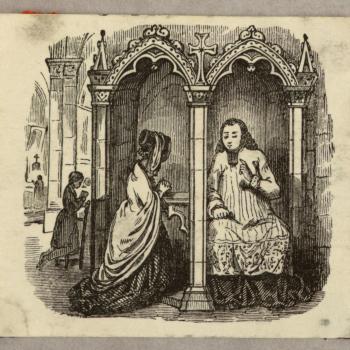Have you ever watched Disney’s Frozen and been enthralled by Elsa’s passion-felt “Let it go?” If so, you’re not alone- the song hit the top five on the Billboard Hot 100 chart and was one of the best-selling songs in 2014.
Aside from Idina Menzel’s outstanding voice and Disney’s exceptional filmmaking, why might this song have been so admired?
What does this song mean to you?
For Elsa, “let it go” meant that she was finally accepting herself and what makes her different. In fact, as Joseph Shapiro writes in NPR’s Morning Edition, many marginalized groups, including those with disabilities, resonated with the song as it fostered an acceptance of their own unique characteristics.
Now, let’s keep exploring. Is there any truth to this? Should we also “let it go,” and if so, why? And how?
The Psychology of Let it Go
In the field of psychology, we find out that rumination, or repeatedly thinking of negative thoughts, can lead to negative feelings and symptoms of depression. We also find out that avoiding or suppressing negative experiences can actually decrease one’s physical and mental health. So what to do instead?
Mindfulness
Let those negative thoughts go! Psychological literature is rich with evidence of the countless benefits of letting thoughts go. One practice that fosters this release of negative thoughts is mindfulness, defined as a heightened awareness of the present moment (Brown & Ryan, 2003).
Benefits of mindfulness include better physical health, improved attention, reduced depressive symptoms, and greater compassion for others (e.g. Davis & Hayes, 2011). Mindfulness has also been related to less rumination (Svendsen et al., 2016).
How do you practice mindfulness? Well, I recommend checking out Mindful or the Headspace app for a guide on how to practice mindfulness. But to summarize, one approach is to focus one’s attention on present-moment sensory experiences. These might include the sound of chirping birds, the din of appliances, the dim morning sunrise, the smooth hair drifting across one’s neck, or the support of the wood beams under one’s feet.
Mindfulness might also involve greater attention to one’s physiological processes—most commonly, one’s breath. In and out, in and out.
In addition to focusing attention on sensory experiences and breath, we can also cultivate an acceptance of one’s thoughts and emotions. In mindfulness interventions, for example, one is often encouraged to notice their thoughts and emotions, but to refrain from judging them or generating goals to deal with them. As such, there is a certain detachment that’s fostered: We’re aware of our thoughts and emotions, but we’re not abstaining from reacting reflexively to them (Teaching Mindfulness, Bishop et al., 2004). In doing so, we’re allowing the thoughts to be and thus, to be released from us.
Although it may seem counterintuitive, research shows that this heightened awareness of the present moment leads to less rumination (Deyo et al., 2009). So, it seems that based on these findings, we can “let our thoughts go” by simply being more aware of and accepting our physiological, sensory, thought, and emotional experiences.
Emotional disclosure
Another vast set of findings suggest that disclosing, or sharing, negative emotions and experiences promotes long-term health and well-being (Pennebaker & Beall, 1986). Such discloser contrasts with avoidance of negative emotions and experiences which can lead to a sense of anxiety, negative feelings, and even difficulty with thinking (Wenzlaff & Wegner, 2000). Such findings are in line with the ecclesial texts suggesting we acknowledge and share our mistakes and shortcomings; and in line with Elsa’s revelation to “let it go.”
“Let it Go” expressed in ancient writings
Elsa’s not alone in her revelation about letting it go, nor are modern-day empirical findings unsupported by ancient writings.
Consider not the past
In Isaiah, we read, “Remember not the events of the past, the things of long ago consider not; See, I am doing something new!” (Isaiah 43:18). Here we see this sense of letting things go such that newness can be overcome.
Acknowledge our sins
Moreover, in 1 John 1:9, we read that we should “acknowledge our sins” and that in doing so, we will be cleansed “from every wrongdoing” (1 John 1:9).
Similarly, the Catholic Church upholds forgiveness by inviting us to confess our sins. In the Sacrament of Confession, for example, we state our sins openly to a priest and ask the Lord for forgiveness, demonstrating the intent to change our ways. You can read more about this Sacrament in the Catechism or read the Patheos blog post about writer Dwight Longenecker’s first confession.
Overall, we see that when we acknowledge our mistakes, we are freed from them.
Let our gifts shine
In addition to acknowledging our sins, we also can let our gifts be revealed. We read:
No one who lights a lamp conceals it with a vessel or sets it under a bed; rather, he places it on a lampstand so that those who enter may see the light.. For there is nothing hidden that will not become visible, and nothing secret that will not be known and come to light (Luke 8:16-17).
Here we see that when we accept our gifts and let them be, they shine. We also find out that every secret will be made known; so hey, we might as well start accepting our thoughts, mistakes, gifts, and feelings now!
Freedom
In each of these readings, we see that we can bring everything to light—the good and the bad. The Bible invites us to acknowledge and accept the past—all the good and all the bad. And to allow it to be.
In doing so, we give everything to Jesus, which we do in Mass when we pray in unison, “accept and bless these gifts, these offering” (Eucharistic Prayer 1). When we accept and acknowledge what’s “in us” (1 John 1:9), we become truly free. Free in Christ, free from rumination.

Photo by Jacob Bentzinger on Unsplash
How to truly let it go
With Elsa, evangelists, and research suggesting that we “let it go,” we might as well give it a try. But how?
Well, we can start by using basic mindfulness techniques. Maybe you’re taking on a daily walk or on a morning commute. Or, maybe you’re spending a few minutes in a chapel with light streaming through stained glass windows.

Photo by Josh Eckstein on Unsplash
We can focus on our sensory experiences, our breath, or maybe the Blessed Sacrament as we sit in adoration. Rrefocus our minds to our immediate experiences—thoughts and feelings included. Identify and acknowledge each thought, feeling, failure, sin, frustration, hope, suffering, gift, and desire that comes to mind. Accept each with total detachment, giving each one to Jesus. In doing so, surprisingly, we let them go, leaving us free and ready for the newness of Christ.













